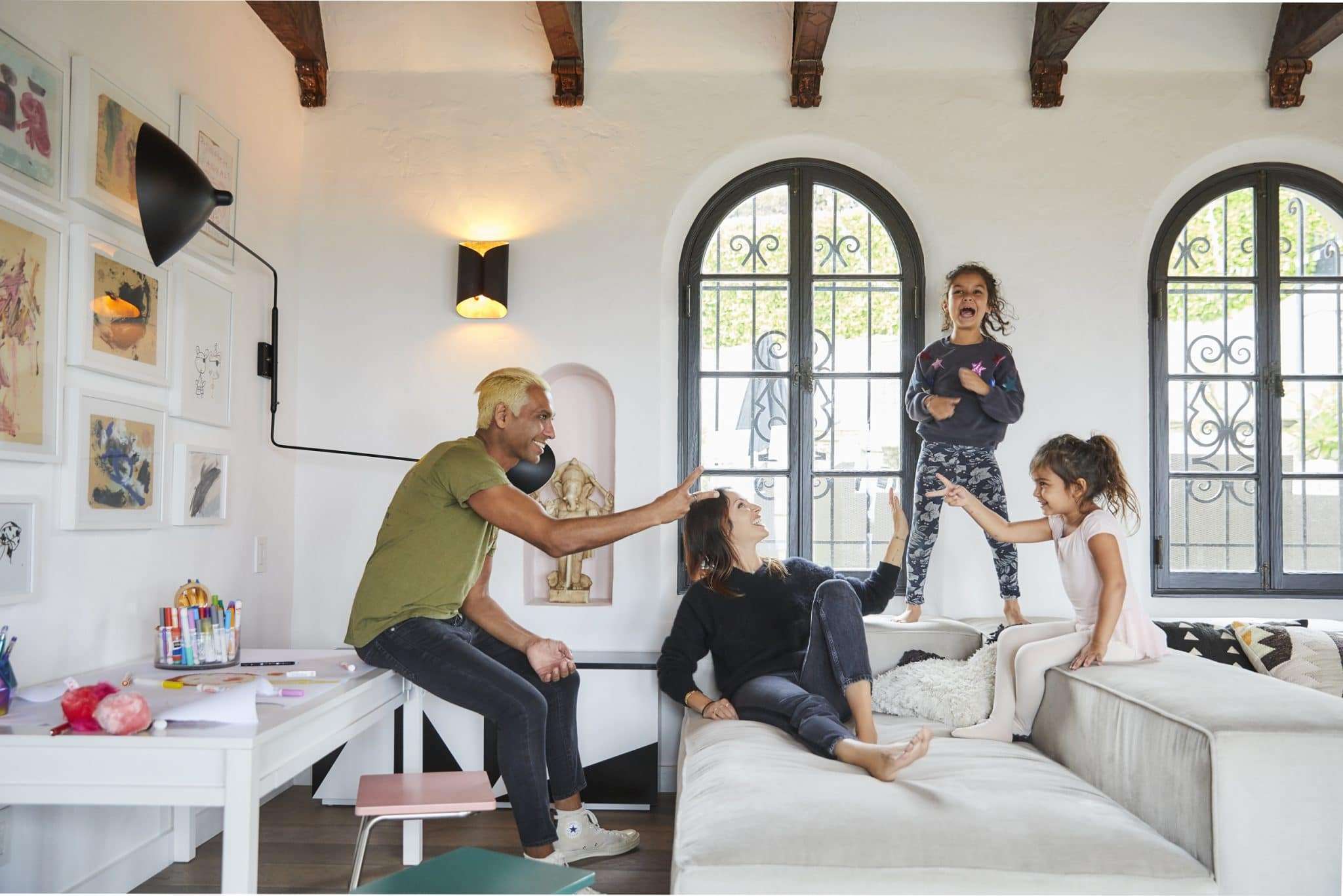For No Doubt bassist Tony Kanal and his wife, designer Erin Lokitz, going vegan changed everything, including their approach to interior design.
Tony Kanal and Erin Lokitz’s lives changed forever in a single moment.
Eleven years ago this spring, Kanal, co-founder of the iconic Southern California pop band No Doubt, and his wife Lokitz, an actress-turned-designer, watched an advanced copy of Unity, a documentary directed by filmmaker Shaun Monson. It’s the follow-up film to Monson’s 2005 groundbreaking film Earthlings, which detailed factory farming and the egregious treatment of animals commonplace in the agricultural, entertainment, medical, and fashion industries.
That was May 3rd, 2012, Lokitz told me as we sat in her kitchen, “We were on the floor of the screening room in fetal positions, weeping, not believing what we saw and that we, even as vegetarians then, were contributing to animal suffering and the destruction of the planet.” The next day they went vegan.
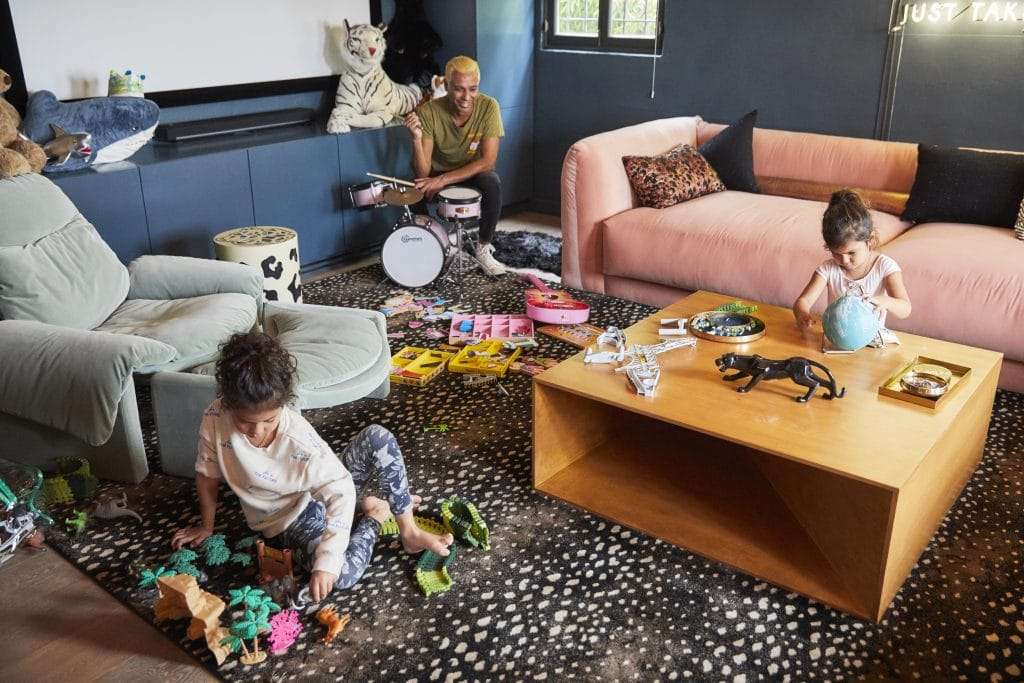
I’m in the couple’s Los Angeles home in the hills of Los Feliz next to Griffith Park to see how Lokitz has renovated the space — because cutting out animals from their diet wasn’t going far enough, she says.
Lokitz, a designer who has renovated her own home as well as several other homes in LA, including cabins in the mountains of Lake Arrowhead, has done everything she can to ensure their home is vegan, too — from the furniture to the decor and everything in between.
It’s been no small task, especially with two young daughters. The labyrinthian five-bedroom Spanish-style home, which once belonged to the late actor Heath Ledger, was built in 1925, designed by the famed Los Angeles architect Stiles O. Clements. He designed commercial and residential properties across Southern California, including the El Capitan Theater, the Mayan, and the Adamson House in Malibu.
Ethics and interior decorating
The home needed a lot of work, and the couple has been renovating over the years a bit at a time, from the kitchen to the bathrooms.
Lokitz and Kanal worked with Studio Hus founder and creative director Tatum Kendrick not only to update the house but to remove the animal products and replace them with sustainable and eco-friendly options whenever possible. This includes home furnishings such as pillows and blankets as much as it is furniture and decor.
Lokitz and Kendrick started in Kanal’s office, where the family spends a lot of time. There, the family listens to records, looks out the big glass windows at the Los Angeles skyline, snuggle with their geriatric rescue cat, and uses the room for extra sleeping space when family visits.
There’s also a dreamy playroom for the couple’s two girls where they watch movies, play games, dress up, and entertain.
One of Lokitz’s favorite vegan materials is velvet, and that’s abundant in the house — especially in the playroom.
“We did a Pink Velvet sofa and matched the ceiling with the sofa,” she says of the playroom. The walls are deep green aimed at bringing a cozy feeling that’s still playful. There, she used Stark carpeting to keep it fun but also practical — stain-resistant and spot-friendly carpets are musts for most parents.
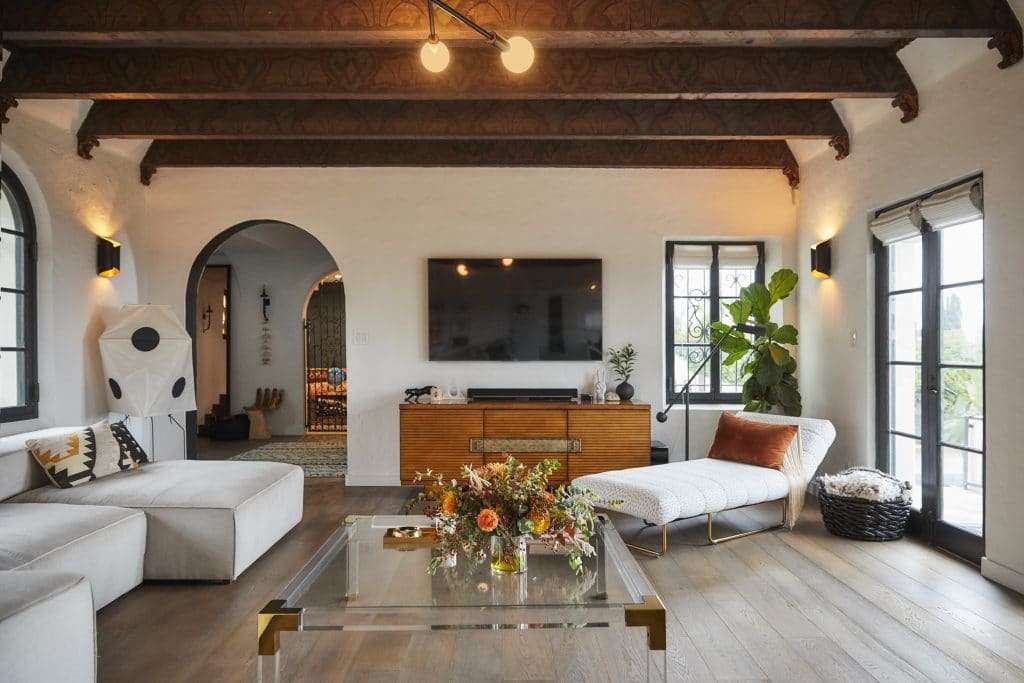
Rugs have proven to be one of the biggest challenges in finding cruelty-free furnishings, she says. Quality rugs have long been made from wool, and while vintage is a great way to support a circular economy and a trend that’s incredibly hot right now, for Lokitz, it felt wrong — like a constant reminder of the animal agriculture industry.
Through Lulu and Georgia, she found polypropylene rugs that the family loves, and she says they also found some hemp and jute rugs from India via the Armadillo company.
As home decor goes more sustainable, alternatives to wool rugs are becoming more widely available.
“Good vegan rugs are out there,” Lokitz says. “It just takes some time to find them.”
Vintage chairs
But if you really want to get Lokitz talking about decor — ask her about her vintage chairs — there are plenty. They appear throughout the house ranging across eras and styles. The same way a handbag makes the outfit, chairs make the rooms in this historic house.
“Even if you have a new house, put in a vintage piece — there is a soul there — craftsmanship that we don’t have anymore,” she says. The craftsmanship is evident in the durability of vintage pieces that have survived decades already.
Vintage chairs, especially, are having a moment. While the secondhand app Chairish takes listings for all kinds of vintage furniture, its namesake highlights the demand for vintage chairs. “You used to be able to find them on Craigslist and thrift stores easily,” Lokitz says. “It’s not so easy these days.”
Loktiz understands why. “There’s so much personality in a vintage chair. They just don’t make them like that anymore,” she says.
“I love a big giant cozy vintage chair. You have to hunt for them. And it’s really exciting when you find one,” she says. “I think the bigger the furniture, the better. I believe it’s good just to fill the room.” But she says less is more — or rather, more is more, but when it’s fewer, bigger pieces, that is.
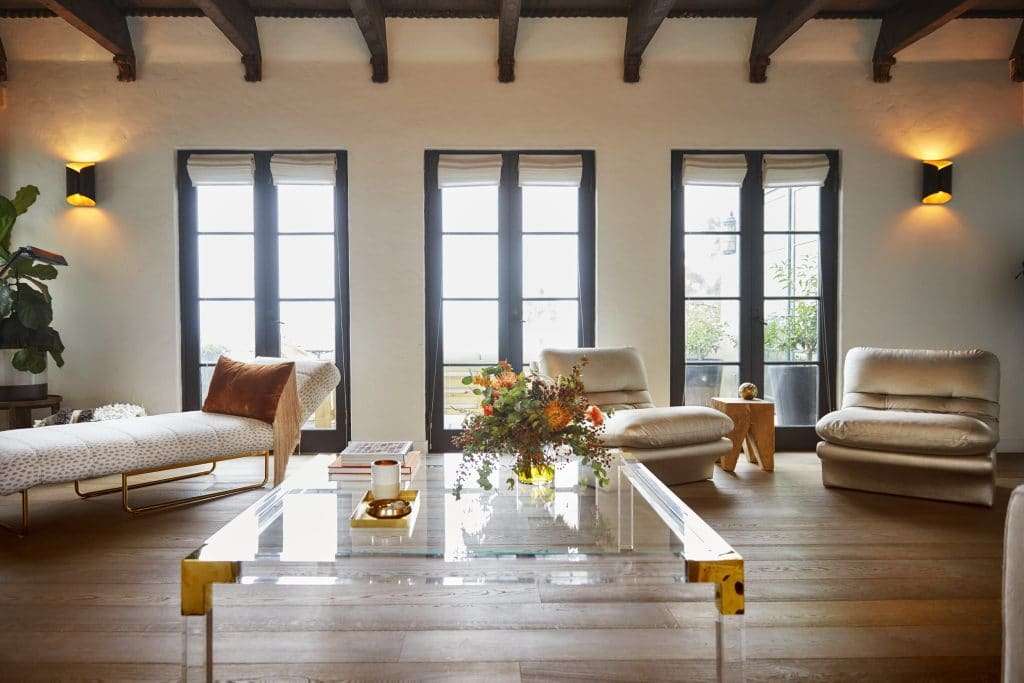
“If you have big chunky chairs, and you can fit two people in them and a couch that fills your space, it feels very inviting,” she says. “Everyone can hang out and it’s more comfortable.”
There is a vintage chair in the playroom that she had re-covered in turquoise velvet to “bounce all the colors off of each other.”
Big astronaut-looking vintage chairs populate the living room, too — a mix of 2001: A Space Odyssey meets dental office recliner.
These futuristic-looking ones are vintage Vladimir Kagan chairs that she had recovered in fabric from Brazil. “They do amazing vegan leathers and vegan suedes,” she says. The fabric is so durable, Lokitz says you could probably stand on them in high heels and not damage them. “They’re pretty fantastic.”
Sustainable furnishings
For the sustainable shopper, vintage offers a lot of plusses, too. Even for new home furnishings made from upcycled materials and responsibly-sourced wood, there can still be chemicals that off-gas, something sensitive people and new parents, especially, may want to avoid. With vintage, all the chemicals have typically gassed off over the years.
But that’s not the only reason to shop vintage. Keeping older items in circulation means demand for newer items decreases, and that’s better for our already-taxed landfills and secondhand stores.
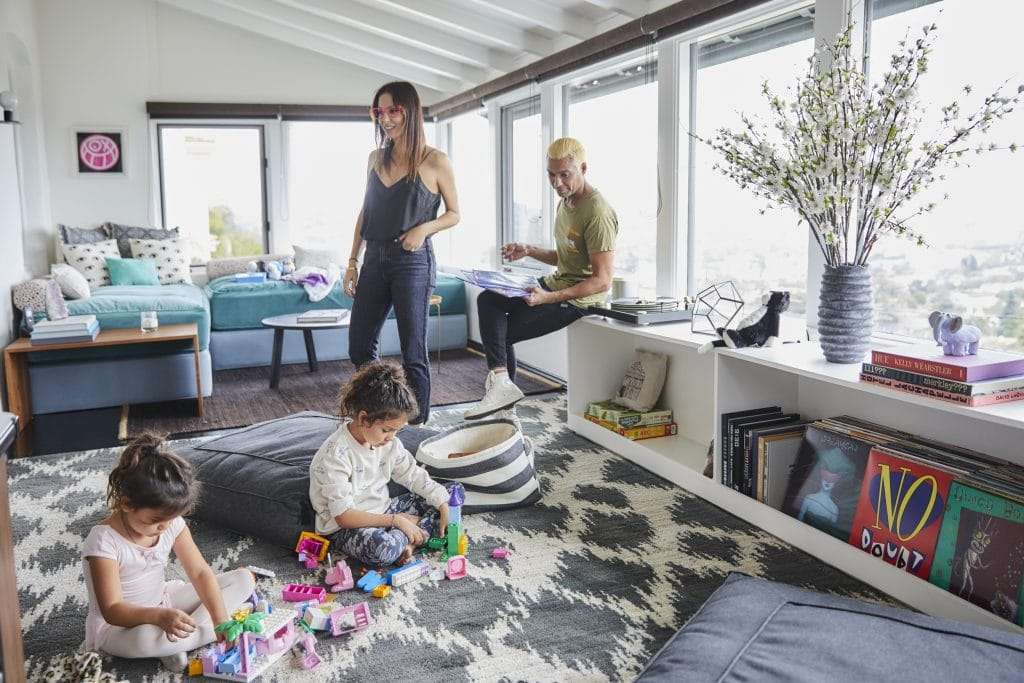
Lokitz says updating to not just vegan, but sustainable home furnishings, too, has gotten easier than ever in recent years. There are viable and ethical alternatives to wool, leather, suede, and down. But she says you have to do your due diligence, especially when making big purchases.
The other thing she cautions against is knowing that vegan doesn’t always mean sustainable, and sustainable doesn’t always mean vegan. If those things are important, you really need to investigate the brands or work with designers who fully understand the distinction.
She says part of the reason animal products are found in items billed as sustainable is that animal materials have gotten so cheap; down, a common pillow and comforter fill, is a byproduct of meat and foie gras, for example. Suede and leather prices have dropped since countries like India have taken over much of the production for cheaper than U.S. producers.
“These animal products, they’re treated as such commodities, and it’s not easy to know it’s even in the items you’re buying. People don’t give it a second thought,” she says. “But then you’re buying your dream couch and you find out it’s filled with feathers. It’s heartbreaking.”
But just as with innovations in fashion textiles, Lokitz says the options are ever-increasing in home furnishings, for every budget, and for every style. “There’s so much out there,” she says. “Much more than when we started a decade ago.”
“Today you can find gorgeous foam-filled and fabric-covered couches, and you can’t tell the difference,” she says. “And even if you can, it’s way nicer to not sit on a bunch of dead animals if you have the choice.”
Related on Ethos:

